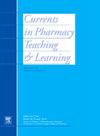First professional year student Pharmacists' approaches to resolving drug diversion incidents in a community pharmacy simulation
IF 1.3
Q3 EDUCATION, SCIENTIFIC DISCIPLINES
引用次数: 0
Abstract
Introduction
Drug diversion, the illegal movement or misuse of controlled substances, is a significant public health concern. Pharmacists are crucial in preventing and managing drug diversion but may lack adequate training and confidence in addressing these incidents. This study aimed to evaluate first-year pharmacy students' approaches to resolving drug diversion scenarios using Kings' six models of criminal justice: Medical, Bureaucratic, Status Passage, Power, Due Process, and Crime Control models.
Methods
A skills-based role-playing activity was conducted from 2022 to 2024, where students confronted both internal (technician diverting medication) and external (patient with problematic prescriptions) diversion cases. A deductive thematic analysis using a convergent mixed methods approach was completed using reflections from the activity.
Results
Reflections from 327 students were thematically analyzed using Braun and Clarke's reflexive method, revealing the Bureaucratic model as the most common approach, followed by the Medical, Due Process, Status Passage, and Crime Control models. A “passive approach” theme also emerged, reflecting avoidance of conflict.
Conclusion
This study highlights discrepancies between students' public expressions and private reflections, suggesting discordance between societal expectations and personal beliefs in handling drug diversion. The findings suggest a need for enhanced educational strategies to equip future pharmacists with effective approaches to managing drug diversion in practice.
一年级学生药师在社区药房模拟中解决药品转移事件的方法
药物转移,即非法移动或滥用管制药物,是一个重大的公共卫生问题。药剂师在预防和管理药物转移方面至关重要,但在处理这些事件方面可能缺乏足够的培训和信心。本研究旨在评估药学一年级学生解决药物转移情境的方法,采用king的六个刑事司法模型:医疗模型、官僚模型、身份通道模型、权力模型、正当程序模型和犯罪控制模型。方法采用基于技能的角色扮演活动,在2022 - 2024年期间,让学生面对内部(技术人员转移药物)和外部(处方有问题的患者)转移病例。利用活动的反思,使用收敛混合方法方法完成了演绎主题分析。结果使用Braun和Clarke的自反方法对327名学生的反思进行了主题分析,发现官僚模型是最常见的方法,其次是医学模型、正当程序模型、身份通道模型和犯罪控制模型。“被动做法”的主题也出现了,反映了避免冲突。结论本研究突出了学生在处理毒品转移时的公开表达与私下反思之间的差异,表明社会期望与个人信念之间存在不一致。研究结果表明,需要加强教育策略,使未来的药剂师在实践中有效地管理药物转移。
本文章由计算机程序翻译,如有差异,请以英文原文为准。
求助全文
约1分钟内获得全文
求助全文
来源期刊

Currents in Pharmacy Teaching and Learning
EDUCATION, SCIENTIFIC DISCIPLINES-
CiteScore
2.10
自引率
16.70%
发文量
192
 求助内容:
求助内容: 应助结果提醒方式:
应助结果提醒方式:


